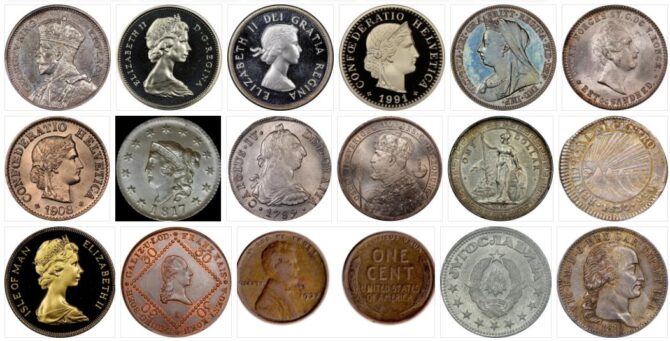The Latin word inversus was derived from the French envers, which came to our language as an obverse. This term is used especially with reference to medals, tokens and coins to name the most relevant face or side by the drawing they carry.
The obverse is usually the face that displays the face of a personality, a historical monument, the representation of a momentous event or some allegory. The opposite side is known as the reverse.
In this context, it is necessary to define the concept of numismatics, since it is the study and practice of collecting official paper money and coins in a country at a certain time. If the focus is only on paper money, the most suitable term is notaphilia.
The origins of numismatics date back to the Roman Empire; However, until now the exact point in history at which it became a social phenomenon is unknown, where collecting is generally spoken of. As a science, it can be said that it began during the 19th century, and its importance is incalculable, since its findings serve to reconstruct an essential part of the history of peoples, both in aspects of their economy and their politics, their religion and its geography.
Thus, the front can be said to be the most important face, while the reverse is the least important face. By extension to this idea, the duality between front and back appears in other areas beyond numismatics: papers, tables and flags, for example, can also have a front and a back.
The dictionary of the Royal Spanish Academy (RAE), in fact, recognizes the meaning of the concept of obverse in the field of the printing press to name the face where the first page corresponding to a sheet is printed and the mold with which said Print.
Here comes into play the discipline known as minting, which refers to the act of certifying, printing, stamping or minting a piece of metal with the use of a die or stamp. This is especially practiced on medals and coins.
The minted object acquires a specific value, exchange or intrinsic, and so when we have in our hands a legal tender we can know what allows us to buy thanks to the data printed on its front and back, although we ignore the value of the material and the processes used for their manufacture, since they are not relevant in a commercial exchange.
It should be noted that the obverse of banknotes and coins is often used to pay different tributes. The authorities of a country, responsible for minting the legal tender, can make the decision to include representative images or portraits of certain characters or events of great importance at the national level. In Argentina, to cite a case, the government created a series of hundred-peso bills that, on the obverse, features a woman with a handkerchief covering her head, the symbol of the Mothers and Grandmothers of Plaza de Mayo.
In educated language, the term obverse can acquire a different meaning, far from material objects: it serves to describe the most important part of an event, an epoch or a process, among other spaces of time. For example, when speaking of a scientific discovery, we can say that it has a certain risk of environmental contamination as its reverse, but that its obverse lies in the opening of new doors to knowledge and a growth at a technological level unprecedented until now.
